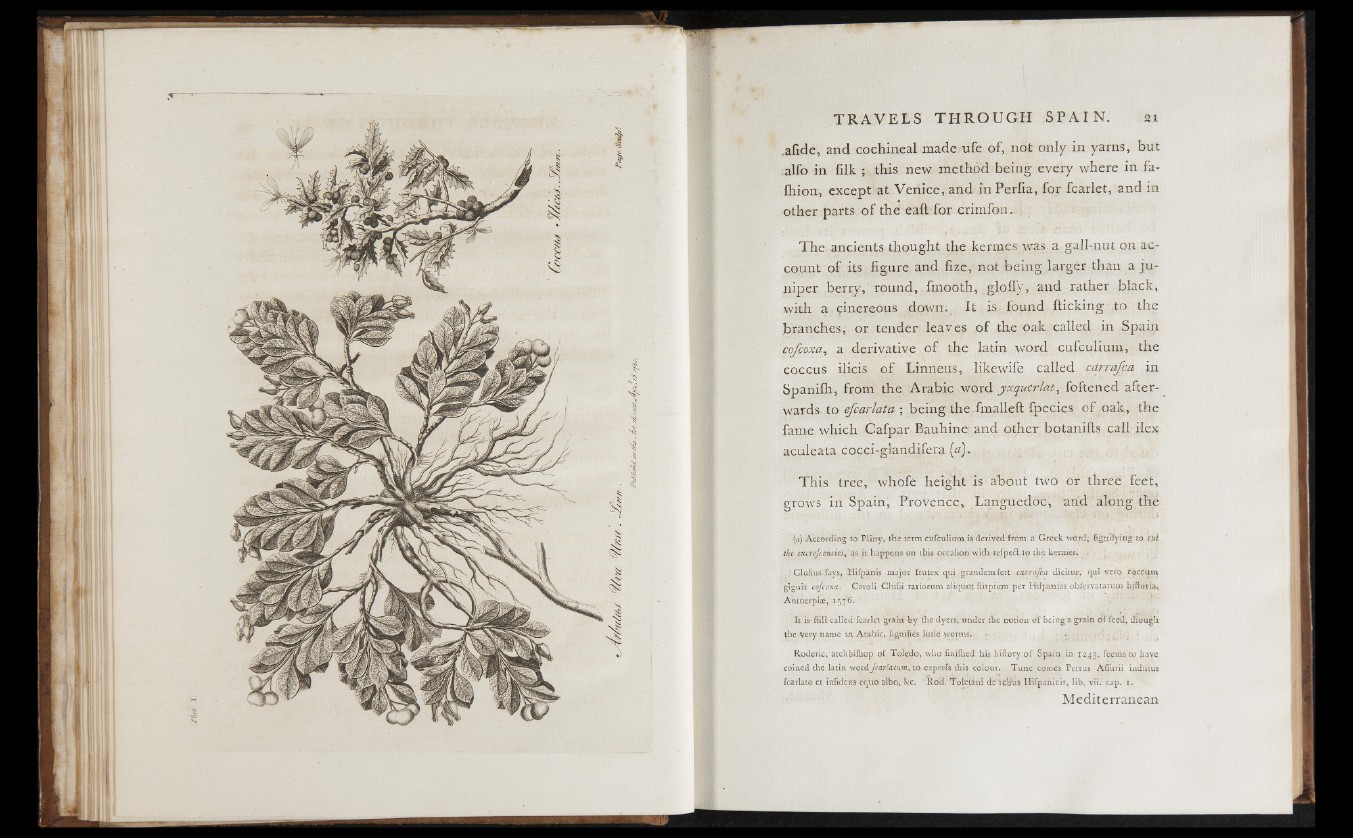
.afide, and cochineal made ufe of, not only in yarns, but
.alfo in filk ; this new method being every where in fa’
fhion, except at Venice, and in Perfia, for fcarlet, and in
other parts of the eail for crimfon.
The ancients thought the kermes was a gall-nut on account
of its figure and fize, not being larger than a ju niper
berry, round, frnooth, gloffy, and rather black,
with a cinereous down. It is found flicking to the
branches, or tender leaves o f the oak called in Spain
cqfcoxa, a derivative o f the latin word cufculium, the
coccus ilicis o f Linneus, likewife called carrafca in
Spaniih, from the Arabic word yxquerlat, foftened afterwards
to efcarlata ; being the fmalleft fpecies of oak, the
fame which Cafpar Bauhine1 and other botanills call ilex
aculeata cocci-glandifera («).
This tree, whofe height is about two or three feet,
grows in Spain, Provence, Languedoc, and along the
(a) According to Pliny, the term cufculium is derived from a Greek word,- figmfying to cui
the excrefcencies, as it happens on this oecafion with-refpeél tò thè kermes.
Cluiiusfays, Hifpanis major frutex qui grandemfert carrafca dicitur, qui vero cqcc'um
gignit cofcoxa, Caroli Clufii rariorum aliquot flirpium per Hifpanias obfervatarum hifloria,
Antuerpiae, 1576*
It is ftill called fcarlet grain by the dyers, under the notion o f being a grain of feed;, though
the Very name in Arabic, fignifiés little worms.
Roderic, archbiihop of Toledo, who fmiilied his hiftory o f Spain in 1243, feems to have
coined the latin word fcarlatum, to exprefs this colour. Tunc comes Petrus Affimi indùius
fcarlato et infidens equo albo* 8cc. Rod. Toletàni de tcbhis Hifpanicis, lib, vìi. cap. 1.
Mediterranean